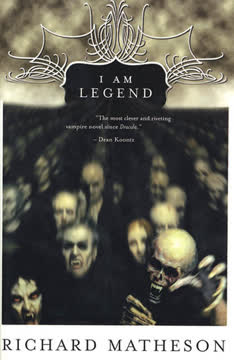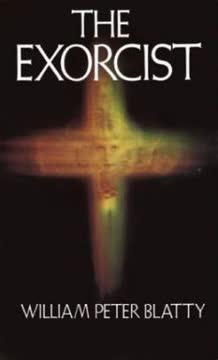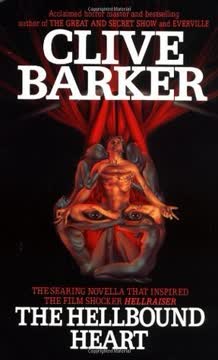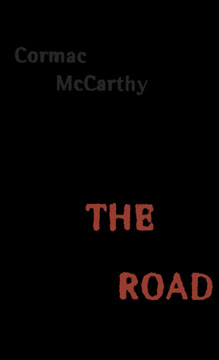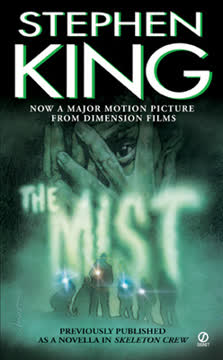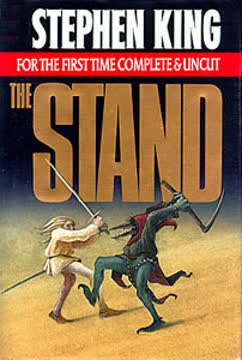Plot Summary
Lonely Survivor's Routine
In a post-apocalyptic world, Robert Neville is the last known human survivor of a pandemic that has turned the rest of humanity into vampires. He spends his days fortifying his home, gathering supplies, and researching the disease. His nights are filled with the sounds of vampires trying to break into his house. Neville's life is a monotonous cycle of survival, driven by the hope of finding a cure for the vampiric plague.
The Plague's Origin
Neville reflects on the origins of the plague, which began as a mysterious illness that spread rapidly, turning people into bloodthirsty creatures. He recalls the chaos and fear that gripped the world as society collapsed. Despite the overwhelming odds, Neville clings to the belief that the disease is caused by a bacterium, and he dedicates himself to finding a scientific explanation and solution.
The Vampire Hunt
Neville spends his days hunting vampires, capturing them for experimentation, and disposing of their bodies. He has developed a methodical approach to killing them, using stakes and garlic to keep them at bay. His research is driven by a desperate need to understand the disease and find a cure, but the isolation and desperation and constant danger take a toll on his mental health.
A Glimmer of Hope
Neville's bleak existence is momentarily brightened by the appearance of a stray dog. The animal becomes a symbol of hope and companionship for Neville, who tries to befriend it. However, the dog is wary and eventually succumbs to the disease, leaving Neville devastated. This loss reinforces his determination to find a cure and save any remaining survivors.
Ruth's Arrival
Neville encounters Ruth, a seemingly uninfected woman, during one of his outings. Her presence challenges his belief that he is the last human alive. Despite his initial distrust, Neville allows Ruth into his home, hoping she might be the key to understanding the disease. Their interactions are tense, as Neville struggles to balance his desire for companionship with his fear of betrayal.
Trust and Betrayal
As Neville grows closer to Ruth, he discovers that she is part of a new society of infected individuals who have learned to coexist with the disease. Ruth's mission was to spy on Neville, but she develops genuine feelings for him. Despite her warnings, Neville is captured by the new society, who view him as a threat to their existence.
The New Society
Neville learns that the new society has found a way to live with the disease, using a combination of blood and drugs to control their symptoms. They plan to execute Neville, seeing him as a relic of the old world and a danger to their new order. Ruth, torn between her loyalty to the new society and her feelings for Neville, tries to help him escape.
The Final Stand
Realizing that he cannot escape, Neville reflects on his life and the changes in the world. He understands that he has become a legend, a figure of fear and myth to the new society. In his final moments, Neville accepts his role in the new world and takes a lethal dose of pills provided by Ruth, choosing to die on his own terms rather than face execution.
Characters
Robert Neville
Robert Neville is the last known human survivor of a global pandemic that has turned people into vampires. He is a methodical and resourceful man, driven by the hope of finding a cure for the disease. His isolation and desperation has taken a toll on his mental health, leading to bouts of depression and alcoholism. Despite his loneliness, Neville remains committed to his research and survival.
Ruth
Ruth is a woman who enters Neville's life, challenging his belief that he is the last human alive. Initially, she is sent to spy on Neville by a new society of infected individuals who have learned to coexist with the disease. However, Ruth develops genuine feelings for Neville and is torn between her loyalty to the new society and her desire to help him.
Ben Cortman
Ben Cortman is Neville's former neighbor and one of the vampires who regularly attempts to break into Neville's home. Despite being a vampire, Cortman retains some of his human characteristics, making him a unique and persistent adversary for Neville. His presence serves as a constant reminder of the world Neville has lost.
Virginia Neville
Virginia is Neville's deceased wife, who succumbed to the plague and returned as a vampire. Her death and transformation haunt Neville, fueling his determination to find a cure. Virginia represents the personal loss and tragedy that Neville has endured in the wake of the pandemic.
Kathy Neville
Kathy is Neville's young daughter, who also fell victim to the plague. Her death is a source of deep pain and regret for Neville, who was unable to save her. Kathy's memory serves as a driving force behind Neville's quest for a cure.
Plot Devices
Isolation and Desperation
Neville's isolation is a central theme in the story, highlighting the psychological impact of being the last human survivor. His loneliness drives him to the brink of madness, as he struggles to maintain his humanity in a world overrun by vampires. This isolation is both a physical and emotional barrier, shaping Neville's actions and decisions throughout the story.
Scientific Inquiry
Neville's dedication to scientific research is a key plot device, as he seeks to understand the disease and find a cure. His experiments and observations provide insight into the nature of the vampiric plague, while also serving as a coping mechanism for his isolation. The scientific inquiry underscores the tension between reason and superstition in the story.
The New Society
The emergence of a new society of infected individuals who have learned to coexist with the disease is a pivotal plot device. This society represents a shift in the world order, challenging Neville's understanding of normalcy and survival. The new society's existence forces Neville to confront his own beliefs and ultimately accept his place in the new world.
Analysis
"I Am Legend" explores themes of isolation and desperation, survival, and the nature of humanity in a post-apocalyptic world. Neville's journey is one of self-discovery, as he grapples with the loss of his family, the collapse of society, and his own role in the new world. The story challenges the reader to consider the fluidity of normalcy and the potential for change in the face of adversity. Through Neville's experiences, the novel examines the resilience of the human spirit and the capacity for adaptation in a world transformed by disaster. Ultimately, "I Am Legend" is a meditation on the nature of legend and the enduring impact of one man's struggle for survival.
Last updated:
FAQ
0. Synopsis & Basic Details
What is I Am Legend and Other Stories about?
- Last Man's Struggle: Richard Matheson's I Am Legend follows Robert Neville, seemingly the sole human survivor in a world overrun by vampiric beings. His days are a relentless cycle of fortifying his home, scavenging for supplies, and conducting scientific research to understand and combat the plague.
- Daily Survival Rituals: Neville's existence is defined by strict routines: repairing his house, making garlic garlands and wooden stakes, and disposing of the bodies of vampires who perish in the sun. His nights are a terrifying ordeal, besieged by the constant cries and attempts of the infected to breach his defenses.
- Quest for Knowledge: Driven by a desperate need for answers, Neville delves into medical texts, attempting to unravel the biological mysteries of the vampiric bacillus. His journey is one of profound isolation and desperation, punctuated by fleeting moments of hope and crushing despair, as he grapples with his sanity and the ever-present threat.
Why should I read I Am Legend and Other Stories?
- Psychological Depth Explored: The novel offers a profound exploration of human psychology under extreme isolation and desperation, showcasing Robert Neville's descent into loneliness, alcoholism, and the struggle to maintain sanity. It's a masterclass in character study, revealing how a man adapts—or fails to adapt—to an unimaginable new reality.
- Subversive Genre Masterpiece: Matheson brilliantly subverts traditional vampire lore, grounding the supernatural in scientific inquiry and biological mutation. This innovative approach transforms a horror story into a thought-provoking commentary on evolution, societal change, and the shifting definitions of "normalcy" and "monster."
- Existential Dread & Identity: Beyond the horror, the book delves into deep existential questions about purpose, identity, and the meaning of survival when humanity itself has been redefined. Neville's ultimate realization about his place in the new world forces readers to confront uncomfortable truths about perspective and the nature of legend.
What is the background of I Am Legend and Other Stories?
- Post-War Anxieties Reflected: Written in 1954, I Am Legend subtly reflects the anxieties of the post-World War II era, particularly fears surrounding biological warfare, widespread disease, and societal collapse. The rapid, inexplicable spread of the plague mirrors contemporary concerns about atomic weapons and unseen threats.
- Cold War Isolation Echoes: The pervasive sense of isolation and desperation experienced by Neville can be seen as an allegory for the Cold War's psychological impact, where individuals felt vulnerable and alone against an unseen, overwhelming enemy. His fortified home becomes a bunker against a world transformed by an ideological (or biological) shift.
- Scientific Method vs. Superstition: The narrative is deeply rooted in the mid-20th century's growing faith in science, even as it grapples with ancient superstitions. Neville's relentless pursuit of a scientific explanation for vampirism, despite initial failures, highlights the era's belief in human ingenuity to overcome any challenge, even those previously deemed supernatural.
What are the most memorable quotes in I Am Legend and Other Stories?
- "A man could get used to anything if he had to.": This early observation by Neville (Chapter 1) encapsulates his grim adaptability and the sheer monotony of his survival, highlighting the human capacity for resilience even in the face of utter despair. It foreshadows his forced adjustment to a life devoid of human connection.
- "Morality, after all, had fallen with society. He was his own ethic.": This chilling realization (Chapter 7) marks a significant shift in Neville's character, reflecting the breakdown of conventional societal norms and the emergence of a brutal, self-serving pragmatism in his isolated world. It underscores the novel's exploration of humanity's core nature stripped bare.
- "I am legend.": The iconic final line (Chapter 21) delivers a powerful, ironic twist, revealing Neville's ultimate understanding of his role in the new world. It signifies his transformation from the last human to a mythical, feared figure in the eyes of the new society, cementing the novel's profound commentary on perspective and history.
What writing style, narrative choices, and literary techniques does Richard Matheson use?
- Immersive First-Person Perspective: Matheson employs a tight first-person narrative, plunging the reader directly into Robert Neville's isolated and increasingly fractured mind. This choice intensifies the psychological horror, allowing readers to experience Neville's paranoia, despair, and fleeting hopes firsthand, making his internal struggles as terrifying as the external threats.
- Lean, Direct Prose: The writing is characterized by its concise, unadorned style, focusing on action and internal monologue rather than elaborate descriptions. This directness creates a sense of urgency and realism, mirroring Neville's pragmatic, survival-driven existence and enhancing the novel's gritty, post-apocalyptic atmosphere.
- Symbolism and Foreshadowing: Matheson subtly weaves in symbolic elements, such as the recurring dust storms representing the pervasive, inescapable nature of the plague, and the breaking mirror reflecting Neville's deteriorating self-image. Foreshadowing, like his father's scientific skepticism, subtly prepares the reader for Neville's own journey of discovery and the ultimate twist.
1. Hidden Details & Subtle Connections
What are some minor details that add significant meaning?
- The Broken Mirror's Symbolism: Early in Chapter 1, Neville notes, "jagged pieces of the silverbacked glass would start to fall off. Let' em fall, he thought. It was the last damned mirror he'd put there; it wasn't worth it." This seemingly minor detail of the constantly breaking mirror on his door subtly symbolizes Neville's deteriorating self-perception and his increasing detachment from his former identity, reflecting his psychological fragmentation in isolation.
- Dust Storms as a Constant Threat: The frequent "dust storms" (Chapter 6, 10) are more than just environmental hazards; they are a constant, pervasive reminder of the plague's inescapable nature and its method of transmission. Neville's eventual realization that the spores are carried by these storms connects a seemingly mundane detail to the core biological mechanism of the vampirism, highlighting the insidious, airborne threat.
- Classical Music as a Coping Mechanism: Neville's choice of classical music (Beethoven, Mozart, Ravel, Rachmaninoff) is a subtle but significant detail (Chapter 1, 6, 11, 17). It represents his desperate attempt to cling to remnants of civilization, order, and beauty in a chaotic world, serving as a psychological balm against the constant howling of the vampires and his own internal turmoil.
What are some subtle foreshadowing and callbacks?
- Father's Scientific Skepticism: Neville's recollection of his father, "His father had died denying the vampire violently to the last" (Chapter 2), subtly foreshadows Neville's own initial stubborn adherence to scientific explanations over superstition. This callback to his father's rationalism, even in the face of the inexplicable, sets the stage for Neville's methodical, yet often frustrated, scientific inquiry.
- Cortman as "Oliver Hardy": Neville's sudden, almost hysterical realization that Ben Cortman reminds him of "Oliver Hardy" (Chapter 8) is a profound piece of foreshadowing. It highlights Cortman's seemingly indestructible nature and persistent return, but also hints at Neville's own deteriorating mental state, finding dark humor and a twisted familiarity in his tormentor, which complicates his later feelings about Cortman's death.
- The "Duality" Obsession: After Virginia's death, Neville becomes fixated on "a system of twos" (Chapter 9) – "Two people dead, two beds... two eyes, two legs." This seemingly random obsession foreshadows the ultimate revelation of the two distinct types of vampires (living and dead) and the two societies (old and new), emphasizing the fundamental duality that underpins the transformed world.
What are some unexpected character connections?
- Neville's Twisted Bond with Ben Cortman: Beyond the obvious predator-prey dynamic, Neville develops a strange, almost dependent relationship with Ben Cortman. Cortman's nightly shouts of "Come out, Neville!" become a perverse form of companionship, a constant, familiar presence in Neville's otherwise silent world (Chapter 1, 8). Neville even feels a "wrench of despair" when Cortman is killed by the new society, indicating a deeper, unspoken connection forged by shared, albeit opposing, survival.
- The Dog as a Mirror to Neville's Humanity: The stray dog (Chapter 12, 13) becomes a profound connection, mirroring Neville's own struggle for survival, trust, and companionship. Its initial fear and eventual, tentative acceptance of Neville reflect Neville's own guarded hope for connection. The dog's eventual death, succumbing to the disease, is a devastating blow that parallels Neville's own ultimate fate, highlighting the fragility of life and hope in their world.
- Ruth's Unspoken Empathy for Neville: Despite her mission as a spy, Ruth develops genuine feelings for Neville, as revealed in her note: "When we were together in the darkness, close to each other, I wasn't spying on you. I was loving you" (Chapter 19). This unexpected emotional connection transcends their adversarial roles, showing that even in a world of stark divisions, human empathy and connection can still emerge, complicating the narrative's black-and-white morality.
Who are the most significant supporting characters?
- The Dog: Symbol of Fleeting Hope: The stray dog, though unnamed, is profoundly significant as the first living, non-vampiric creature Neville encounters in years (Chapter 12). Its presence briefly rekindles Neville's humanity and hope for companionship, driving him to care for something beyond himself. Its eventual death underscores the pervasive nature of the plague and the crushing weight of loss, reinforcing Neville's isolation and desperation.
- Virginia Neville: The Ghost of the Past: Neville's deceased wife, Virginia, is a constant, haunting presence, representing his profound grief and the personal cost of the plague (Chapter 4, 9). Her "return" as a vampire and Neville's agonizing decision to stake her is a pivotal emotional and psychological turning point, forcing him to confront the brutal reality of his new world and the loss of his past.
- The New Society Members: While largely anonymous, the members of Ruth's society are crucial as they represent the future of humanity and the ultimate challenge to Neville's worldview (Chapter 20). Their organized, methodical approach to survival, and their redefinition of "normalcy," force Neville to confront his own obsolescence and the irony of his "legendary" status.
2. Psychological, Emotional, & Relational Analysis
What are some unspoken motivations of the characters?
- Neville's Self-Punishment through Alcohol: Beyond coping with loneliness, Neville's heavy drinking (Chapter 3, 4, 12) often seems to be a form of self-punishment or an attempt to dull his mind to the horrors he faces and the actions he must take. His internal monologues reveal a deep-seated guilt and despair that he tries to drown, rather than confront, suggesting a subconscious desire for oblivion.
- Ruth's Internal Conflict and Guilt: Ruth's actions are driven by a complex mix of loyalty to her new society and genuine affection for Neville. Her decision to warn him and provide the pills (Chapter 19) reveals a deep-seated guilt over her deception and a desire to mitigate the violence of his inevitable end, suggesting that her "new" identity hasn't entirely erased her human compassion.
- The New Society's Need for a Scapegoat: The new society's motivation to execute Neville, beyond simply eliminating a threat, is subtly implied to be a need for a unifying enemy and a symbolic break from the past. By making Neville "legend" and executing him publicly (Chapter 21), they solidify their own identity and legitimacy, projecting their fears and the chaos of the old world onto him.
What psychological complexities do the characters exhibit?
- Neville's Shifting Sanity and Delusion: Robert Neville exhibits a complex psychological journey, oscillating between methodical scientific inquiry and profound delusion. His conversations with himself, his personification of the house, and his initial inability to accept Ruth's normalcy (Chapter 16) highlight the fragility of his sanity, a direct consequence of prolonged isolation and desperation and trauma.
- The Burden of "Normalcy": Neville's struggle is not just against vampires, but against the redefinition of "normalcy." His initial belief that he is the last "normal" human is shattered when he realizes the new society views him as the anomaly, the "monster" (Chapter 21). This psychological reversal forces him to confront the subjective nature of truth and the power of majority perspective.
- Ruth's Adaptive Identity: Ruth embodies the psychological complexity of adaptation. She has learned to live with the bacillus and function within a new social order, but her lingering empathy for Neville suggests a struggle to fully shed her "old" human values. Her ability to deceive and then show genuine care reveals the psychological compromises necessary for survival in a radically altered world.
What are the major emotional turning points?
- Virginia's "Return" and Staking: The most devastating emotional turning point for Neville is the "return" of his wife, Virginia, as a vampire and his subsequent, agonizing decision to stake her (Chapter 9, 18). This act shatters his last vestiges of hope for a reunion and forces him to commit the ultimate betrayal of his past, cementing his isolation and the brutal reality of his existence.
- The Dog's Death: The death of the stray dog (Chapter 14), after Neville had invested so much hope and effort into befriending and curing it, represents a profound emotional blow. It extinguishes his last tangible connection to companionship and reinforces the futility of his efforts to "save" anything, pushing him further into resigned acceptance of his solitary fate.
- Ruth's Confession and Embrace: Ruth's confession of her true identity and her subsequent embrace with Neville (Chapter 18) is a complex emotional turning point. It offers a fleeting moment of genuine human connection and intimacy, breaking Neville's long-standing isolation, but it is immediately followed by the crushing weight of her betrayal and the realization of his impending doom, making the brief warmth all the more poignant.
How do relationship dynamics evolve?
- From Grief to Pragmatism (Virginia): Neville's relationship with his deceased wife, Virginia, evolves from overwhelming grief and denial (Chapter 4, 9) to a brutal, pragmatic acceptance of her vampiric state. His act of staking her, though agonizing, marks a shift from emotional paralysis to a grim determination to survive, even if it means destroying what he once loved.
- From Distrust to Desperate Affection (The Dog): His interaction with the dog transforms from a cautious, scientific interest to a desperate yearning for companionship (Chapter 12, 13). Neville's patient attempts to win the dog's trust and his profound despair at its illness and death illustrate his deep need for connection, highlighting the emotional void in his life.
- From Suspicion to Intimacy to Betrayal (Ruth): The dynamic with Ruth is the most complex, moving from intense suspicion and interrogation (Chapter 16) to a brief, profound intimacy (Chapter 18), only to culminate in betrayal and a final, bittersweet understanding (Chapter 19). This arc explores themes of trust, deception, and the possibility of genuine human connection even amidst profound conflict and differing realities.
4. Interpretation & Debate
Which parts of the story remain ambiguous or open-ended?
- The Pill's Exact Mechanism: While Ruth explains the pill contains "defebrinated blood and a drug" that "prevents its multiplication" (Chapter 19), the precise scientific mechanism of the drug remains ambiguous. This leaves open questions about the long-term stability of the new society's "cure" and whether it truly eradicates the bacillus or merely manages its symptoms, hinting at potential future challenges for their new world.
- The New Society's Future Morality: The novel ends with the new society establishing its order through violence, executing Neville and other "old race" survivors. While Ruth expresses hope for a less brutal future ("I'll try," Chapter 21), the long-term moral trajectory of this new civilization remains open-ended. It prompts debate on whether they will truly evolve beyond their "primitive" beginnings or if their survival will always necessitate such harsh measures.
- The Scope of Neville's "Legend": The final line, "I am legend," is powerful but open to interpretation. It's ambiguous whether Neville's legend will be one of a terrifying monster, a tragic figure, or perhaps even a misunderstood pioneer. The story leaves it to the reader to ponder how history, especially in a new society, will ultimately remember the "last man" of the old world.
What are some debatable, controversial scenes or moments in I Am Legend and Other Stories?
- Neville's Treatment of Female Vampires: Neville's practice of dragging female vampires into the sunlight for experimentation, and his internal struggle with his own sexual urges (Chapter 2, 7), is a controversial aspect. While framed as scientific necessity, his actions raise questions about dehumanization and the moral compromises made in extreme circumstances, prompting debate on whether his methods are justified or a descent into barbarity.
- The "Re-killing" of Virginia: The scene where Neville discovers his wife, Virginia, has returned as a vampire and he is forced to stake her (Chapter 9) is deeply controversial. It challenges the reader to confront the ultimate horror of the plague—the transformation of loved ones into monsters—and the moral agony of destroying them, blurring the lines between self-preservation and unthinkable violence.
- The New Society's "Justice": The new society's decision to execute Neville and others like him, viewing them as a threat to their existence (Chapter 20, 21), is highly debatable. While they justify it as survival, their methodical, almost celebratory violence, and their lack of compassion for Neville, force readers to question whether their "new order" is truly more civilized than the chaos it replaced.
I Am Legend and Other Stories Ending Explained: How It Ends & What It Means
- Neville's Realization of His New Identity: The novel culminates with Robert Neville's profound epiphany: he is no longer the "normal" human survivor, but rather the "monster" in the eyes of the new, evolved society of conscious, infected beings (Chapter 21). He observes their fear and hatred, understanding that his nightly hunts and killings have made him a terrifying, mythical figure—a "legend"—to them, just as vampires were to the old world.
- The Bacillary Mutation and New Species: The core scientific revelation is that the vampiris bacillus has mutated, allowing some infected individuals to live in the sun for short periods and to control their symptoms with a drug (Chapter 19). This mutation signifies the emergence of a new species, a new form of humanity that has adapted to the plague, rendering Neville's "cure" and his very existence obsolete and threatening to their new order.
- Acceptance and Symbolic Death: Ruth, a member of this new society, provides Neville with a lethal pill, offering him a peaceful death rather than public execution. Neville accepts his fate, recognizing that his time has passed and he does not belong in this new world. His death is not a defeat but a symbolic passing of the torch, marking the end of the old human era and the definitive beginning of the new, adapted species, for whom he will forever be "legend."
Review Summary
I Am Legend received mostly positive reviews, with readers praising its originality, psychological depth, and influence on the vampire and post-apocalyptic genres. Many found the portrayal of isolation and loneliness compelling. Some criticized the dated feel and pacing issues. The ending was divisive but often considered powerful. The accompanying short stories received mixed reactions. Readers appreciated Matheson's scientific approach to vampirism and his exploration of humanity in dire circumstances. The book's impact on horror literature and popular culture was widely acknowledged.
Similar Books
Download PDF
Download EPUB
.epub digital book format is ideal for reading ebooks on phones, tablets, and e-readers.
